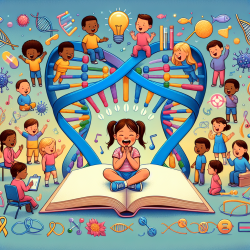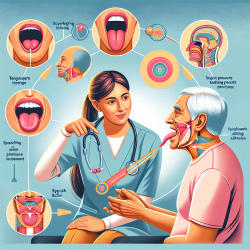In the realm of speech-language pathology, data-driven decisions are paramount. Recent research, particularly the study titled Photographs and Parent Training to Support Conversations about Past Events between Caregivers and Children with Autism (Bhana et al., 2023), provides compelling evidence for using family photographs combined with parent training to enhance communication in children with autism spectrum disorder (ASD). This blog aims to guide practitioners in implementing these research outcomes to improve their practice and encourage further exploration in this area.
Understanding the Research
The study utilized a multi-method design to evaluate the impact of family photographs and telecoaching on parental implementation of communication strategies. Three parent-child dyads participated, revealing that the use of photographs increased the communication strategies used by all parents. Moreover, telecoaching further amplified strategy use for two parents. Interviews indicated spontaneous generalization and maintenance of these strategies.
Key Findings
- Family photographs serve as effective visual supports to enhance communication about past events.
- Parent training in naturalistic developmental behavioral interventions (NDBIs) further improves strategy implementation.
- Telecoaching provides an additional layer of support, ensuring the maintenance and generalization of strategies.
Practical Implementation
For practitioners looking to implement these findings, consider the following steps:
- Introduce Family Photos: Use family photographs during therapy sessions to discuss past events. This visual support can help children with ASD better understand and engage in conversations.
- Provide Parent Training: Educate parents on NDBI strategies such as modeling, offering opportunities, and responding and expanding. Training should be comprehensive and include practical examples.
- Utilize Telecoaching: Offer follow-up coaching sessions via telepractice to reinforce the strategies taught during training. This ensures parents can implement these strategies effectively in their daily routines.
Encouraging Further Research
While this study provides valuable insights, further research is needed to explore the long-term effects of these interventions. Practitioners are encouraged to conduct their own studies or collaborate with researchers to expand the evidence base. Areas of interest could include the impact on children's narrative development, joint engagement, and overall language skills.
Conclusion
The integration of family photographs and parent training in naturalistic developmental behavioral interventions shows promise in enhancing communication for children with ASD. By implementing these strategies and encouraging further research, practitioners can contribute to improved outcomes for children and their families.
To read the original research paper, please follow this link: Photographs and Parent Training to Support Conversations about Past Events between Caregivers and Children with Autism.










